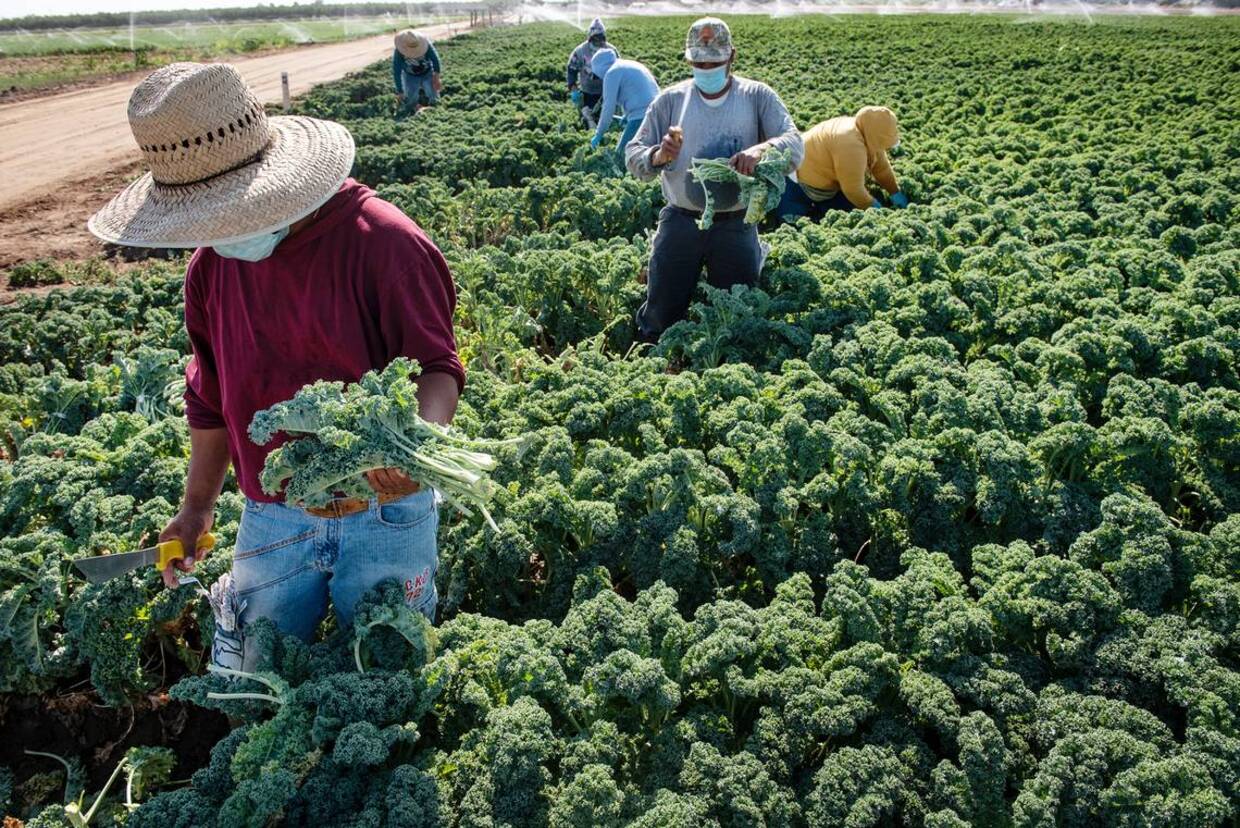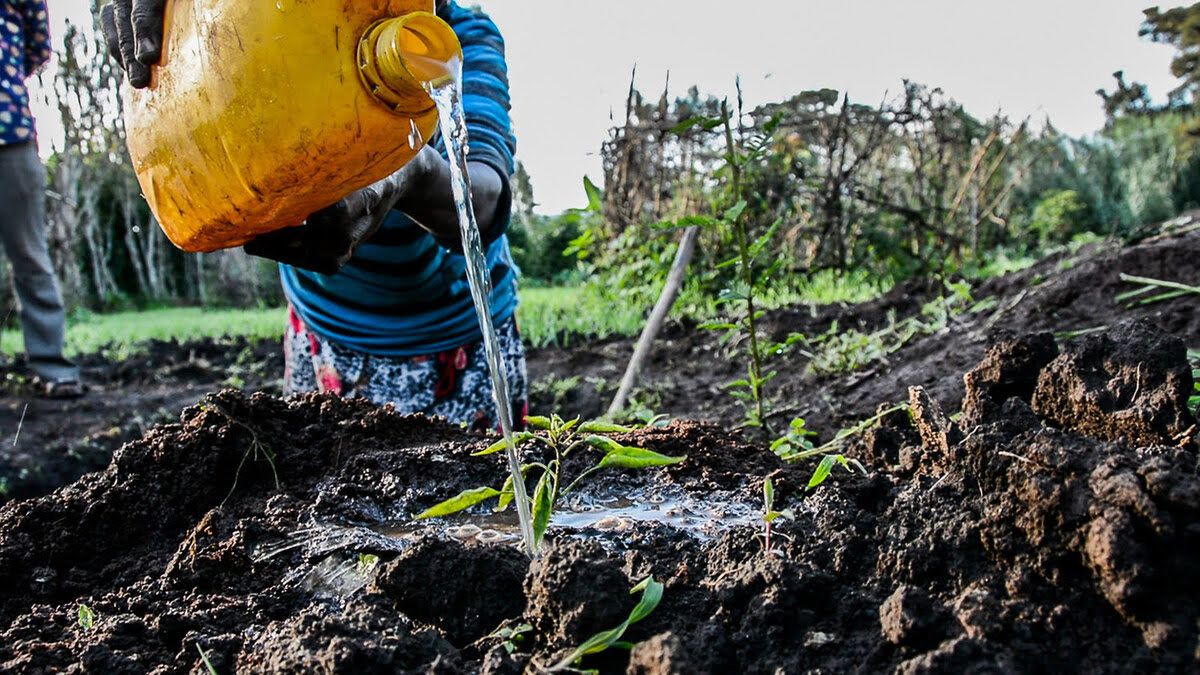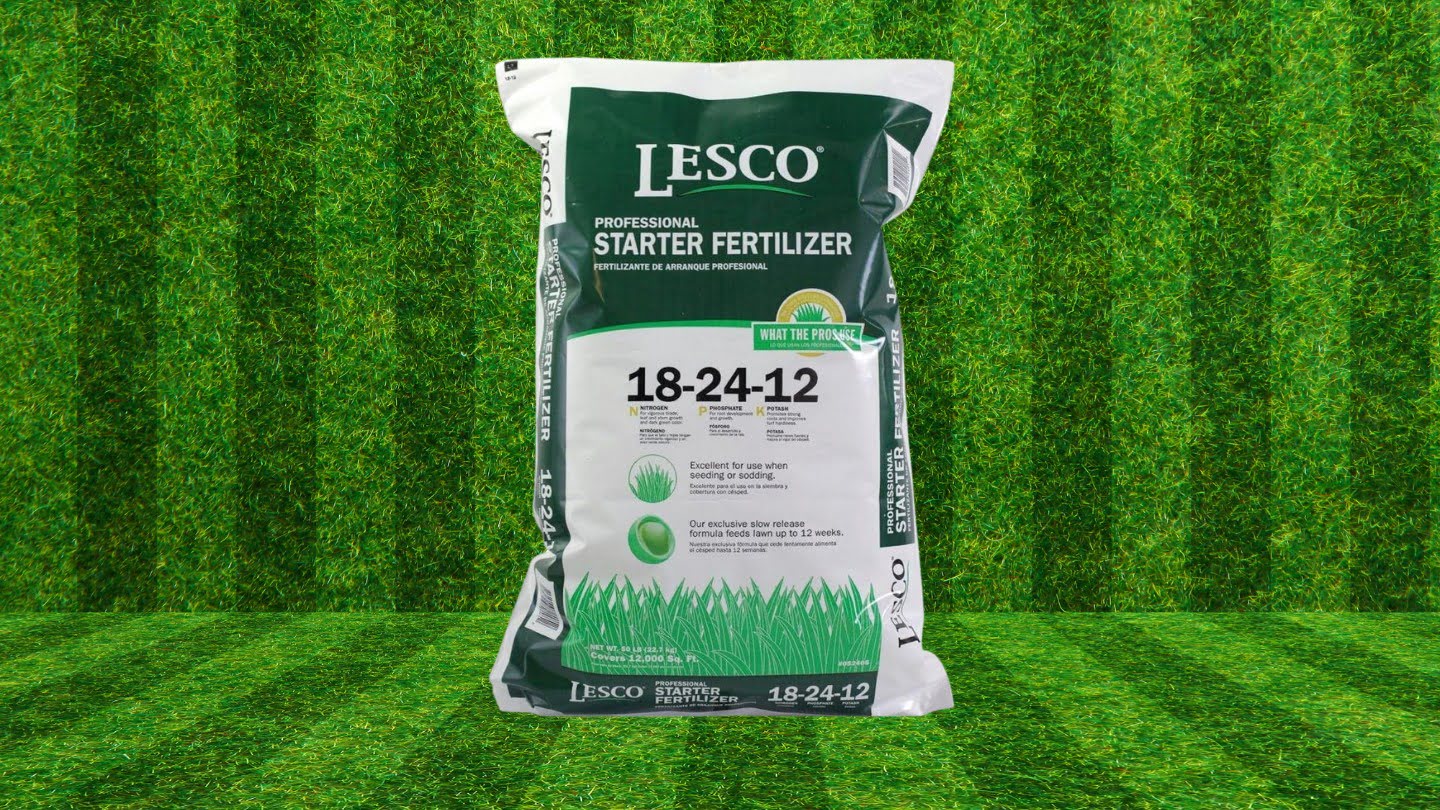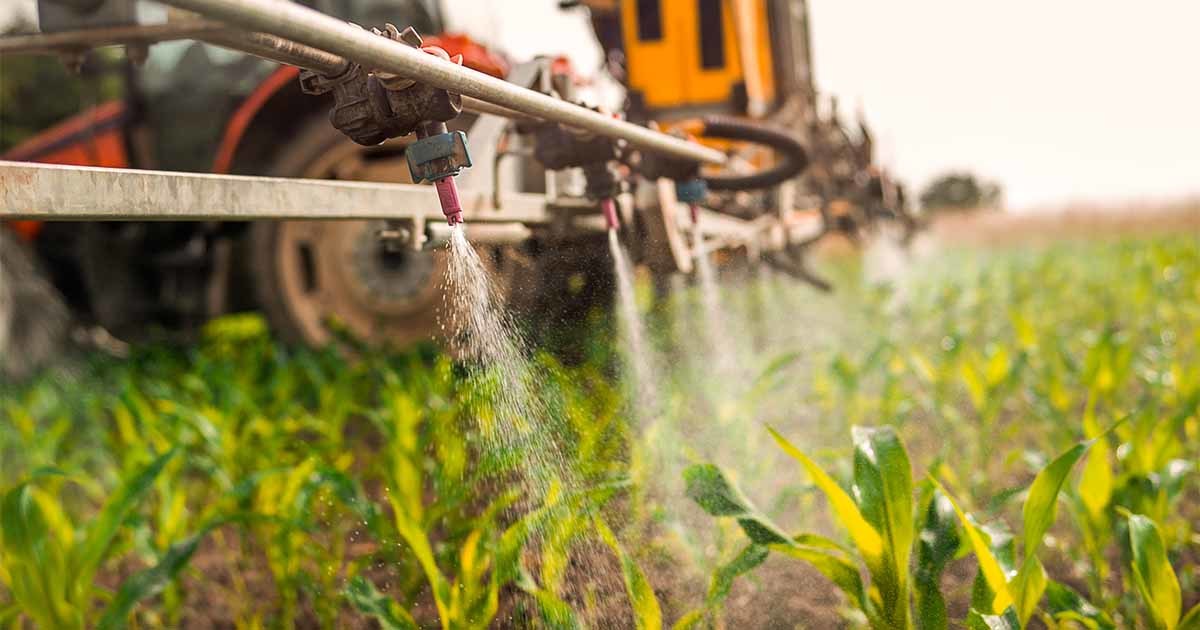Home>Gardening News and Trends>Latest News>When Were Pesticides First Used


Latest News
When Were Pesticides First Used
Modified: January 22, 2024
Discover the historical origins of pesticide use in the latest news. Learn when pesticides were first utilized and how their usage has evolved over time.
(Many of the links in this article redirect to a specific reviewed product. Your purchase of these products through affiliate links helps to generate commission for Chicagolandgardening.com, at no extra cost. Learn more)
Table of Contents
Introduction
Pesticides have become an integral part of modern agricultural practices, helping to protect crops from harmful pests and increase agricultural productivity. However, the use of pesticides is not a recent phenomenon. Humans have been combating pests and using various methods of pest control for centuries.
Throughout history, civilizations have faced the challenge of protecting their crops from pests that threatened food security. Early agricultural societies experimented with different techniques and substances to minimize the damage caused by pests. These early attempts laid the foundation for the development of pesticides as we know them today.
In this article, we will explore the historical use of pesticides, from ancient times to the present day. We will delve into the ancient practices of pest control, the emergence of chemical pesticides in the modern era, and the environmental concerns that have arisen as a consequence of their widespread use.
By examining the historical context of pesticide usage, we can gain a better understanding of how agriculture and pest control have evolved over time. This knowledge can help inform current and future pest management practices, with a focus on sustainability and environmental stewardship.
Now, let’s take a journey back in time to explore the early historical use of pesticides and the methods employed by ancient civilizations to control pests.
Early Historical Use of Pesticides
Since the dawn of agriculture, humans have been confronted with the challenge of protecting their crops from pests. Early civilizations developed innovative techniques to combat these threats, often relying on natural substances to repel or kill pests.
One of the earliest recorded instances of pesticide use dates back to ancient Mesopotamia, around 2500 BCE. Farmers in this region used sulfur compounds to control insects and mites that attacked their crops. They also employed primitive traps and barriers to keep pests at bay.
Ancient Egyptian agriculture also showcased early pest control methods. The Egyptians used various plant-based substances, such as neem oil and garlic, to repel insects. They were also skilled in employing cultural practices like crop rotation and the use of companion planting to deter pests naturally.
In ancient China, farmers developed sophisticated methods of pest control, including the use of arsenical compounds to control insects and plant diseases. They employed toxic substances such as mercury and arsenic to protect their crops. The Chinese also recognized the importance of beneficial insects in pest management and encouraged the presence of predators like ladybugs to control pest populations.
Greece and Rome were no strangers to pest control either. The Greeks used extracts from certain plants, like hellebore, to protect their crops from pests. The Romans followed suit and relied on similar natural substances to combat pests.
As civilizations progressed, so did their understanding of pest control. The use of sulfur, lead compounds, and other toxic substances became more prevalent, but these methods were limited in effectiveness and posed significant health risks.
It wasn’t until the 19th century that significant advancements were made in pesticide development. With the discovery of chemical compounds like pyrethrum from chrysanthemums and nicotine from tobacco, scientists began to explore the potential of these substances for pest control.
By examining the historical use of pesticides, we can see that the desire to protect crops from pests is deeply ingrained in human agriculture. The methods and substances used in ancient times laid the groundwork for the development of modern pesticides. In the next sections, we will explore the ancient pesticides and pest control methods in more depth, followed by a discussion of the modern era of pesticide development.
Ancient Pesticides and Pest Control Methods
Ancient civilizations employed various ingenious methods and substances to control pests and protect their crops. These early pesticide practices were often based on natural remedies and cultural practices that aimed to deter or eliminate pests.
One of the earliest examples of ancient pesticides can be found in the use of plant-based extracts. Ancient Egyptians, for instance, utilized natural substances such as neem oil, garlic, and onion to repel insects. These botanical extracts contained compounds that acted as natural insect repellents and deterrents. Farmers would apply these extracts to their crops to ward off pests.
In ancient China, farmers developed a vital understanding of integrated pest management. They recognized the importance of biodiversity and encouraged the presence of beneficial insects to control pest populations. Additionally, Chinese farmers employed various plant extracts, such as wormwood and chrysanthemum, to deter insects. These extracts contained natural toxins that disrupted the feeding and reproductive cycles of pests.
The Greeks and Romans also utilized plant-based substances to combat pests. The Greeks, for instance, used hellebore extracts to control insects and rats. Hellebore, a poisonous plant, was ground into a powder and applied to crops to repel pests. The Romans followed a similar approach, using substances like pitch, sulfur, and copper to protect their crops.
In addition to botanical extracts, ancient civilizations also employed cultural practices to control pests. Crop rotation was widely practiced in ancient Egypt and Greece, allowing farmers to break the reproductive cycles of pests and reduce their populations naturally. Ancient Chinese farmers would implement companion planting, where certain plants would be grown alongside crops to repel pests or attract beneficial insects. They also utilized birdhouses to attract birds that would feed on pest insects.
These ancient pesticides and pest control methods demonstrate the resourcefulness and innovation of early civilizations. They crafted practical solutions using natural substances and cultural practices to protect their livelihoods from pests. While the effectiveness of these methods may not have been as potent as modern chemical pesticides, they formed the foundations of pest control practices that continue to be used and refined today.
In the next section, we will explore the era of pesticide development during the Middle Ages, where advancements in pest control practices continued to evolve.
Pesticides in the Middle Ages
The Middle Ages marked a significant period in the history of agriculture and pest control. During this time, advances in farming techniques and the discovery of new substances expanded the repertoire of pesticides available to farmers.
One notable development in the Middle Ages was the use of toxic substances derived from plants. For example, the use of pyrethrum, extracted from the flowers of chrysanthemum plants, became more widespread. Pyrethrum proved effective against a variety of insects and was particularly effective in controlling fleas and lice. Its use extended beyond agriculture and was also applied to repel insects from human habitation.
In addition to pyrethrum, other botanical pesticides gained popularity during the Middle Ages. One such example is rotenone, derived from the roots of certain plants. Rotenone possesses insecticidal properties and was used to control insects in crops and gardens.
Another notable pesticide from this period is arsenic. Arsenic-based compounds were used to control pests such as rats, mice, and insects. However, the toxic nature of arsenic raised concerns, both for the environment and human health.
During the Middle Ages, pest control practices were also influenced by religious beliefs. For example, the use of certain plants, such as lavender and rosemary, was believed to ward off evil spirits and protect crops from pests. These plants were often cultivated and placed near fields and gardens as a form of spiritual protection.
Furthermore, the Middle Ages saw the emergence of pest control techniques involving animals. Cats, for instance, were coveted for their ability to catch rodents that infested crops and stored grains. The presence of cats in agricultural communities helped keep pest populations in check.
While advancements in pesticide use occurred during the Middle Ages, it is important to note that these practices were still primarily based on natural substances. The development of synthetic pesticides didn’t occur until much later in human history.
As we move forward in time, the next section will explore the modern era of pesticide development, where the synthesis of chemicals and industrialization revolutionized pest control practices.
Modern Era of Pesticide Development
The modern era of pesticide development began in the late 19th and early 20th centuries, fueled by advancements in chemistry and industry. During this time, the synthesis of chemical compounds revolutionized pest control practices and introduced a new range of highly effective pesticides.
One of the pivotal moments in the history of pesticides was the discovery of DDT (dichlorodiphenyltrichloroethane) in 1939. DDT quickly became widely used due to its remarkable effectiveness against a range of pests, including mosquitoes and agricultural insects. It played a crucial role in controlling diseases like malaria and typhus, significantly impacting public health.
Following the success of DDT, a multitude of synthetic pesticides were developed and introduced into agricultural practices. Organophosphates, carbamates, and pyrethroids became popular choices for pest control due to their effectiveness and versatility.
The Green Revolution of the 1950s and 1960s further accelerated the use of synthetic pesticides. They played a crucial role in increasing crop yields and feeding a growing global population. Intensive agricultural practices and the reliance on pesticides became the norm.
However, with the widespread use of these synthetic pesticides, concerns about their environmental impact and potential health hazards emerged. It was discovered that many pesticides persist in the environment, contaminating soil, water, and wildlife. Additionally, some pesticides were found to have adverse effects on non-target organisms, including beneficial insects and pollinators.
As a response to these concerns, regulations and guidelines were established to control pesticide use and minimize their negative impact. Integrated Pest Management (IPM) practices were also developed, promoting a holistic and sustainable approach to pest control. IPM aims to minimize pesticide use and relies on techniques such as biological control and cultural practices to manage pest populations effectively.
The modern era of pesticide development has also seen a shift towards the development of biopesticides, which are derived from natural substances like bacteria, fungi, and plant extracts. These biopesticides offer a more environmentally friendly alternative to conventional pesticides while still providing effective pest control.
The ongoing development and refinement of pesticides continue to be crucial in the battle against pests and the protection of crops. As science and technology advance, researchers strive to develop innovative and sustainable pest control solutions that minimize harm to the environment and human health.
In the next section, we will delve into the environmental concerns surrounding pesticides and the regulatory measures implemented to address these issues.
Industrialization and Widespread Pesticide Usage
The advent of industrialization in the 20th century profoundly influenced agricultural practices and led to the widespread usage of pesticides. The advancements in manufacturing, transportation, and synthetic chemistry facilitated the production, distribution, and application of pesticides on a large scale.
Industrialization brought about the development of more potent and cost-effective pesticides, leading to increased agricultural productivity. These pesticides offered farmers a means to combat pests more efficiently, protecting their crops and maximizing yields. The ease of access to pesticides, coupled with the promise of improved harvests, encouraged their widespread usage.
One of the key factors contributing to the widespread use of pesticides was the shift towards monoculture farming. Large-scale farms began growing single crops over vast areas, creating ideal environments for pests to thrive. Pesticides became a necessary tool to counteract the resulting pest infestations.
Chemical pesticides became an integral part of modern agricultural practices. They were applied through various methods, including aerial spraying, ground application, and seed treatments. Their use extended beyond crop production and was also employed in livestock farming, public health, and household pest control.
While the use of pesticides brought numerous benefits, concerns over their long-term effects on human health and the environment started to emerge. Prolonged exposure to certain pesticides was linked to various health issues, including cancer, neurological disorders, and hormone disruption.
The environmental impact of widespread pesticide use was also a growing concern. Pesticides, particularly those with long persistence, were found to contaminate soil, waterways, and natural habitats. This contamination had detrimental effects on non-target organisms, including beneficial insects, birds, and aquatic life.
In response to these concerns, regulatory measures and guidelines were implemented to manage pesticide use. Government agencies established standards for maximum residue levels in foods, created registration processes for pesticide products, and enforced regulations to protect the environment and human health.
Integrated Pest Management (IPM) practices gained prominence as a sustainable approach to pest control. IPM emphasizes the integration of various pest management techniques, including biological controls, cultural practices, and judicious pesticide use, to minimize environmental impact while effectively managing pest populations.
Despite these efforts, achieving a balance between pest control and environmental sustainability remains an ongoing challenge. The goal is to develop and adopt practices that reduce pesticide dependency, promote biodiversity, and protect human health and the environment.
In the final section of this article, we will examine the current state of pesticide regulation and the evolving approaches towards sustainable pest management.
Environmental Concerns and Regulation of Pesticides
The extensive use of pesticides in agriculture and other sectors has raised significant concerns about their impact on the environment. Pesticides can have detrimental effects on ecosystems, wildlife, and human health. As a result, regulatory measures have been implemented to address these concerns and mitigate the potential risks associated with their use.
One of the primary environmental concerns surrounding pesticides is their persistence in the environment. Some pesticides can remain in the soil, water, and air for extended periods, leading to contamination. This contamination can have far-reaching effects on ecological balance and the health of organisms within the ecosystem. Aquatic life, in particular, is vulnerable to pesticide runoff from agricultural fields into water bodies.
Another environmental concern is the impact of pesticides on non-target organisms, including beneficial insects, birds, and pollinators. Pesticides can inadvertently harm these organisms, disrupting the delicate balance of ecosystems and leading to unintended ecological consequences. Declines in bee populations, for example, have raised alarm bells due to their crucial role as pollinators in food production.
Recognizing the potential risks associated with pesticide use, governments around the world have implemented regulatory frameworks to ensure their safe and responsible use. These regulations typically include the registration and evaluation of pesticides, the establishment of maximum residue limits in food, and guidelines for their application.
Pesticide registration processes involve rigorous testing and evaluation of the efficacy, safety, and environmental impact of pesticide products. These evaluations determine whether a pesticide can be approved for use, and regulatory bodies continue to monitor and reassess pesticides regularly to ensure they meet safety standards.
The establishment of maximum residue limits (MRLs) in food is another critical aspect of pesticide regulation. MRLs specify the maximum allowable concentration of pesticide residues in food products. These limits are set considering the toxicological risks to human health and are enforced through regular monitoring and inspection programs.
Integrated Pest Management (IPM) practices have also gained recognition as an effective approach to reduce pesticide reliance and minimize environmental impacts. IPM integrates various pest management strategies, including biological control, crop rotation, habitat manipulation, and targeted pesticide application. By prioritizing preventive measures and using pesticides only when necessary, IPM aims to minimize the overall use of pesticides while maintaining effective pest control.
Furthermore, there is an increasing focus on the development and adoption of alternative pest control methods and the use of environmentally friendly pesticides. Biopesticides, for example, are derived from natural sources such as bacteria, fungi, and plant extracts. They offer an eco-friendly alternative to synthetic pesticides, reducing environmental harm while effectively managing pests.
As our understanding of the environmental impacts of pesticides continues to evolve, regulations and practices are continuously revised and updated. The goal is to strike a balance between effective pest control, environmental protection, and human health preservation.
In the final section of this article, we will provide a recap of the historical development of pesticides and discuss the future prospects of pest control practices.
Conclusion
The use of pesticides in agriculture and pest control has a long and complex history, spanning from ancient civilizations to the modern era. Throughout time, humans have sought ways to protect their crops from pests and maximize agricultural productivity.
Ancient civilizations developed innovative methods and natural substances to combat pests, laying the groundwork for the development of modern pesticides. From plant extracts to cultural practices, these early pest control methods showcased the resourcefulness of ancient societies.
With the advent of industrialization and advancements in synthetic chemistry, the modern era of pesticide development emerged. Chemical pesticides offered unparalleled effectiveness in controlling pests and increasing crop yields. However, their widespread usage raised concerns about environmental impact and potential health risks.
Regulatory measures and guidelines were implemented to manage pesticide usage and minimize their negative effects. Integrated Pest Management (IPM) practices gained prominence as a sustainable approach to pest control, focusing on minimizing the use of pesticides through holistic pest management techniques.
As we move forward, there is a growing emphasis on the development and adoption of sustainable pest control practices. The incorporation of biopesticides, the promotion of biodiversity, and the reduction of pesticide reliance are key elements in achieving a balance between effective pest control and environmental stewardship.
While the challenges of pest control persist, the continual evolution of scientific knowledge and technology provides opportunities for innovative solutions. As we advance, it is vital to prioritize practices that protect human health, preserve ecosystems, and sustain global food production.
By understanding the historical context of pesticide development, from ancient remedies to modern regulations, we can navigate the complexities of pest control with a focus on long-term sustainability.









